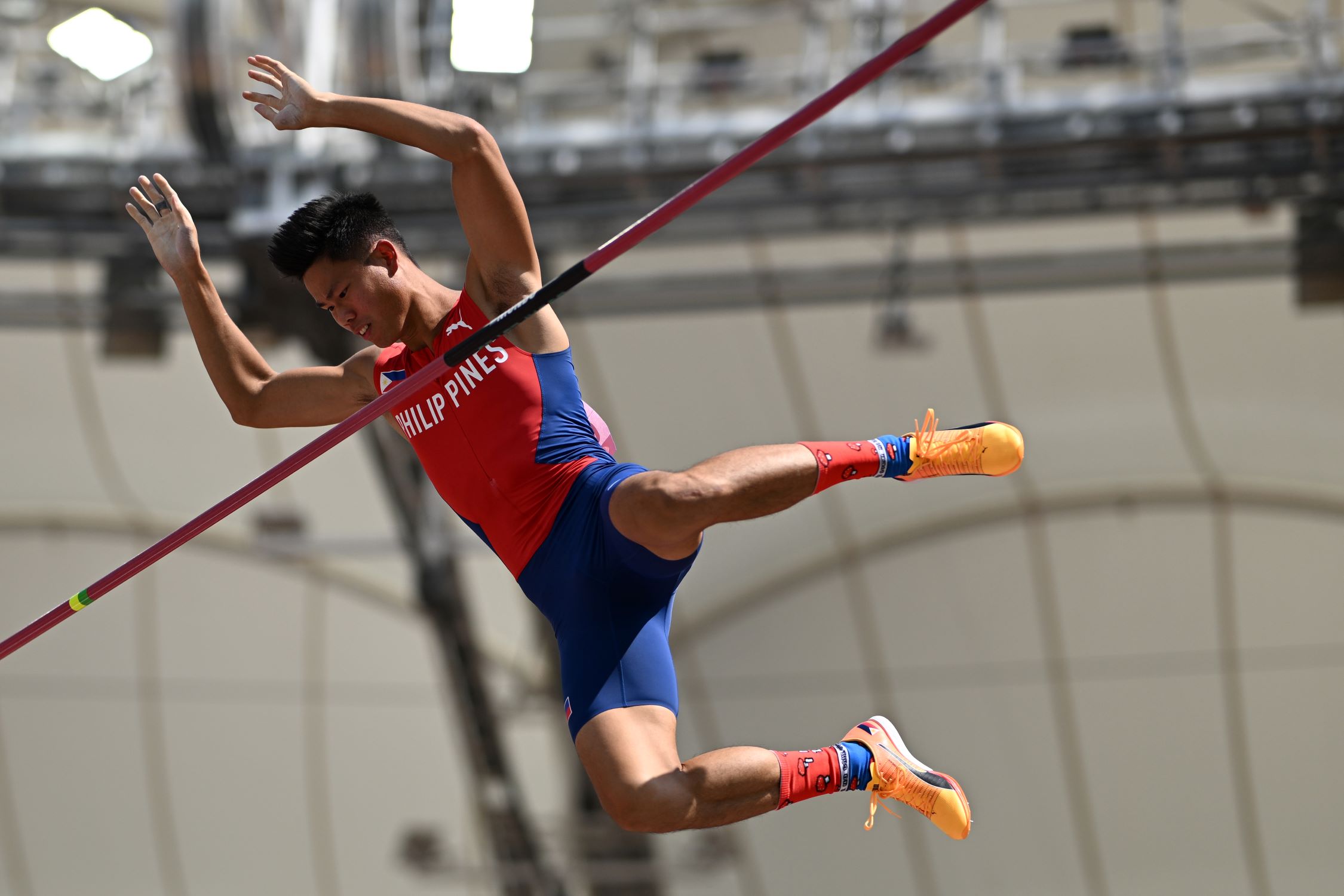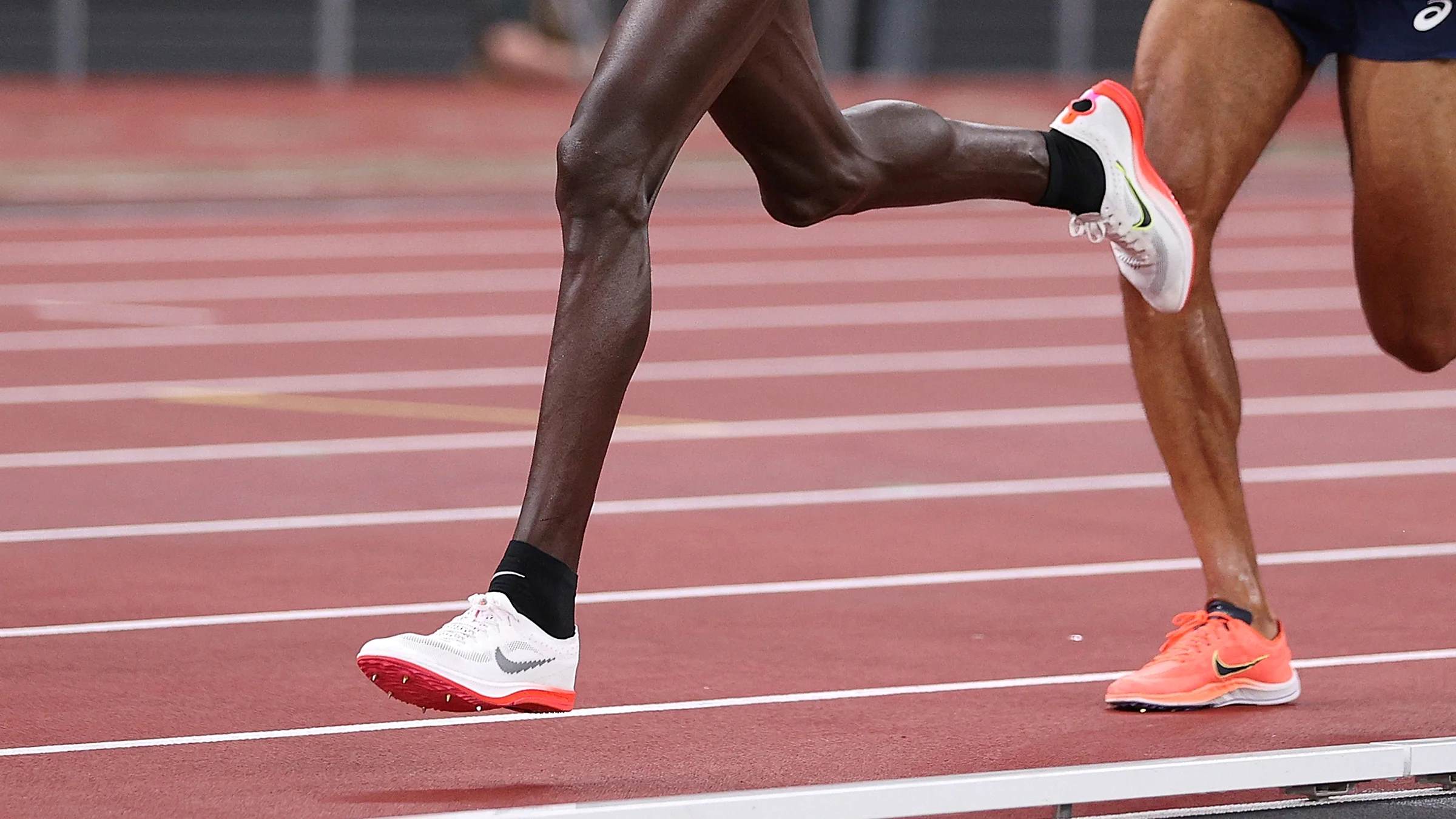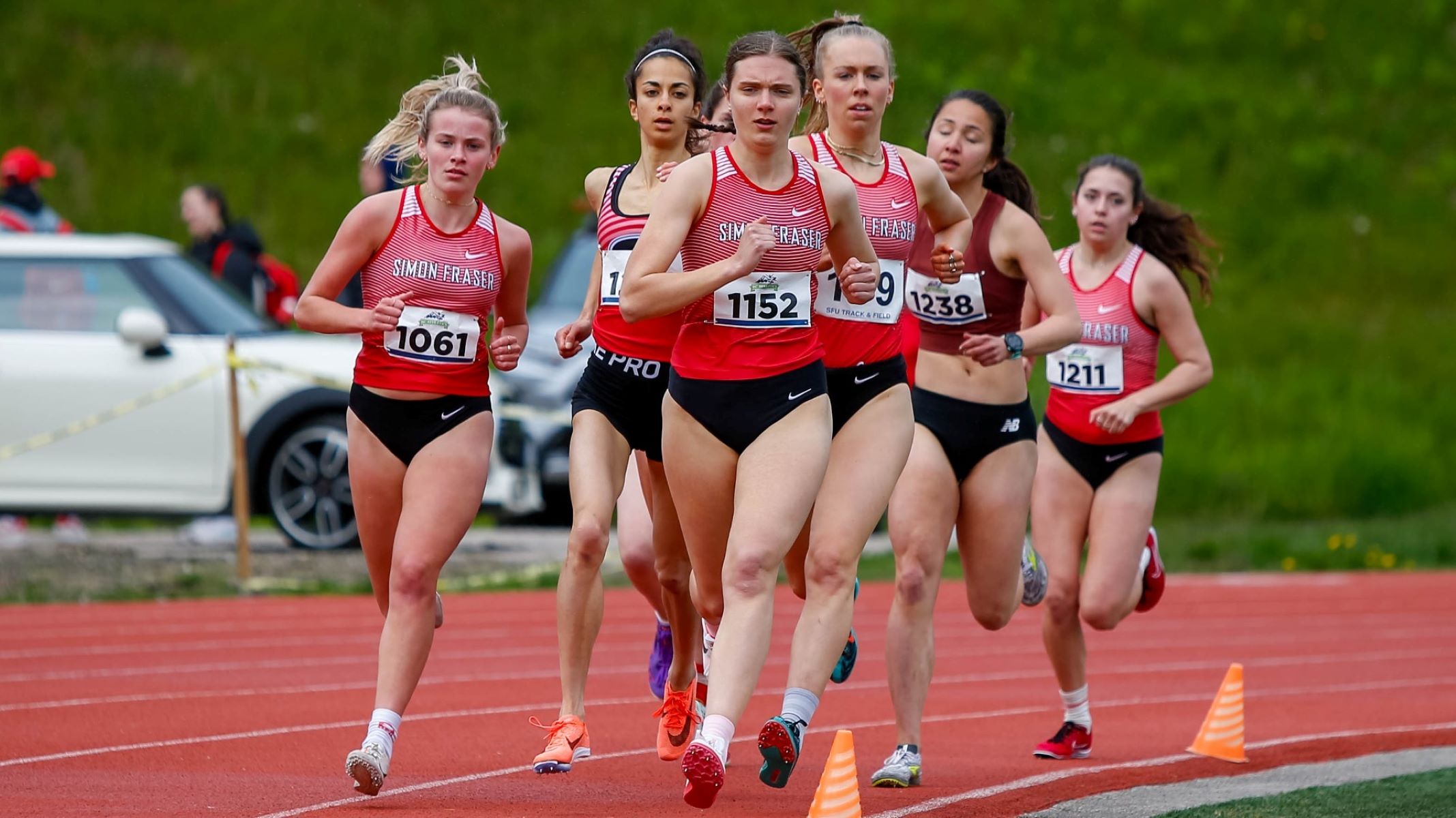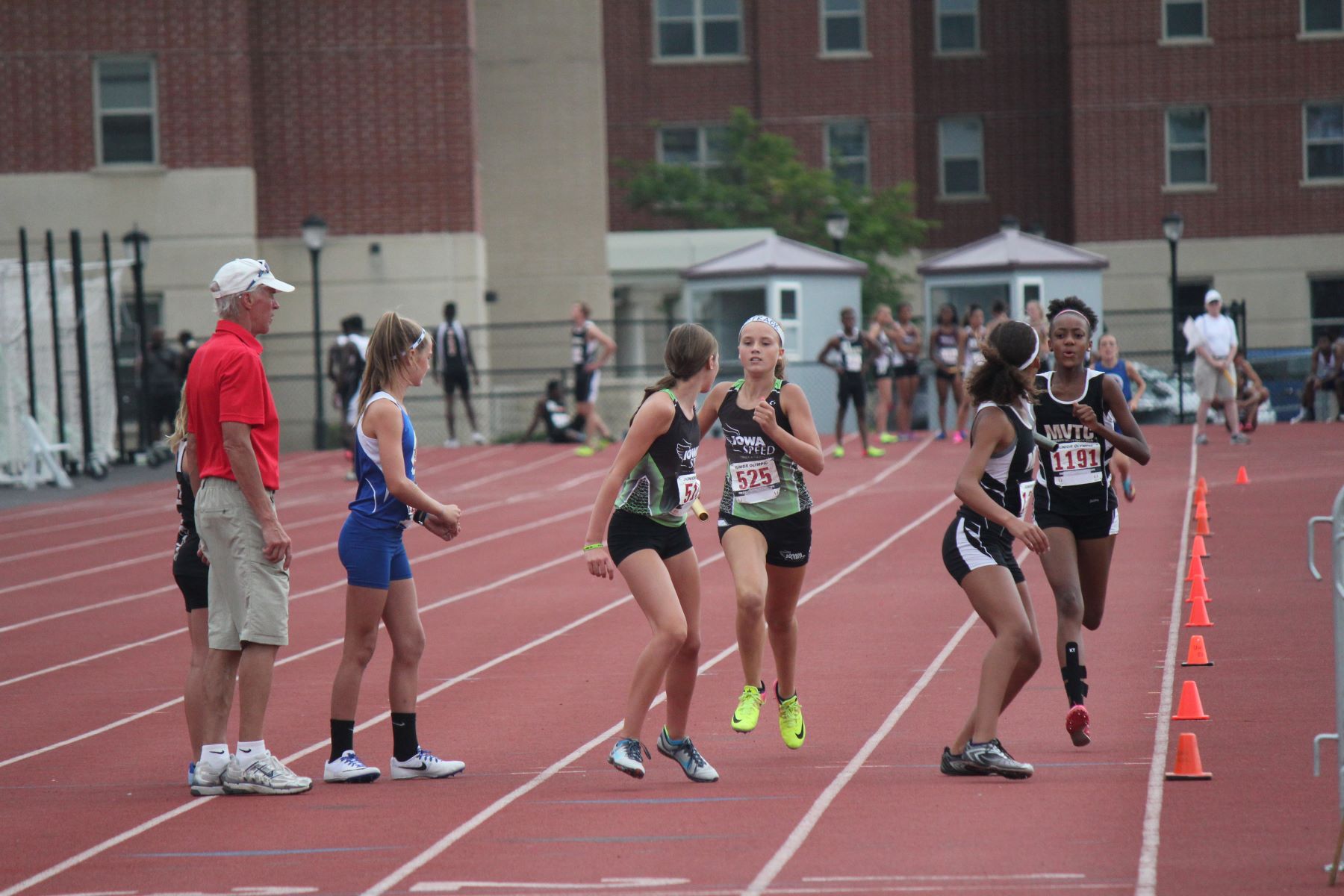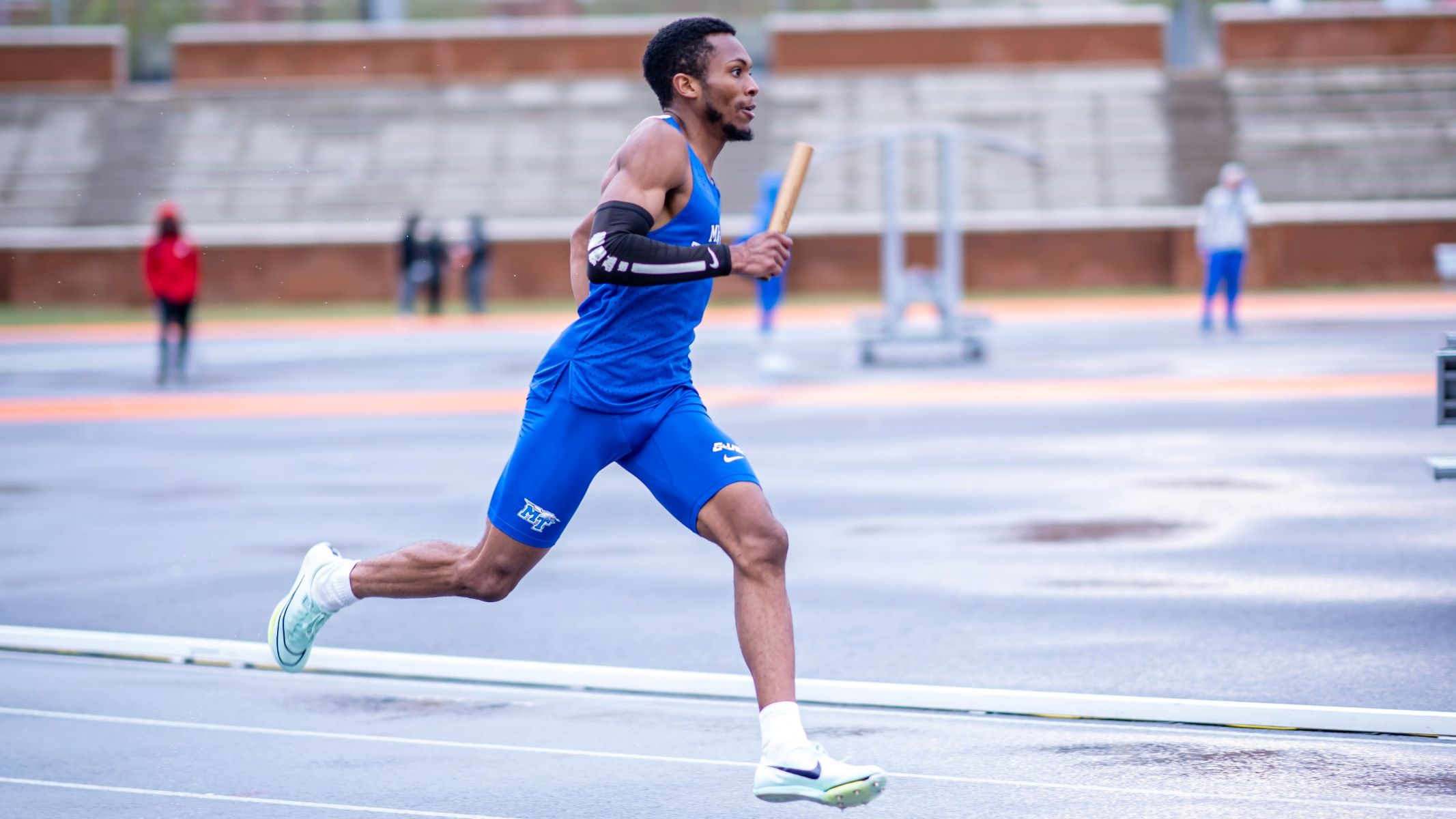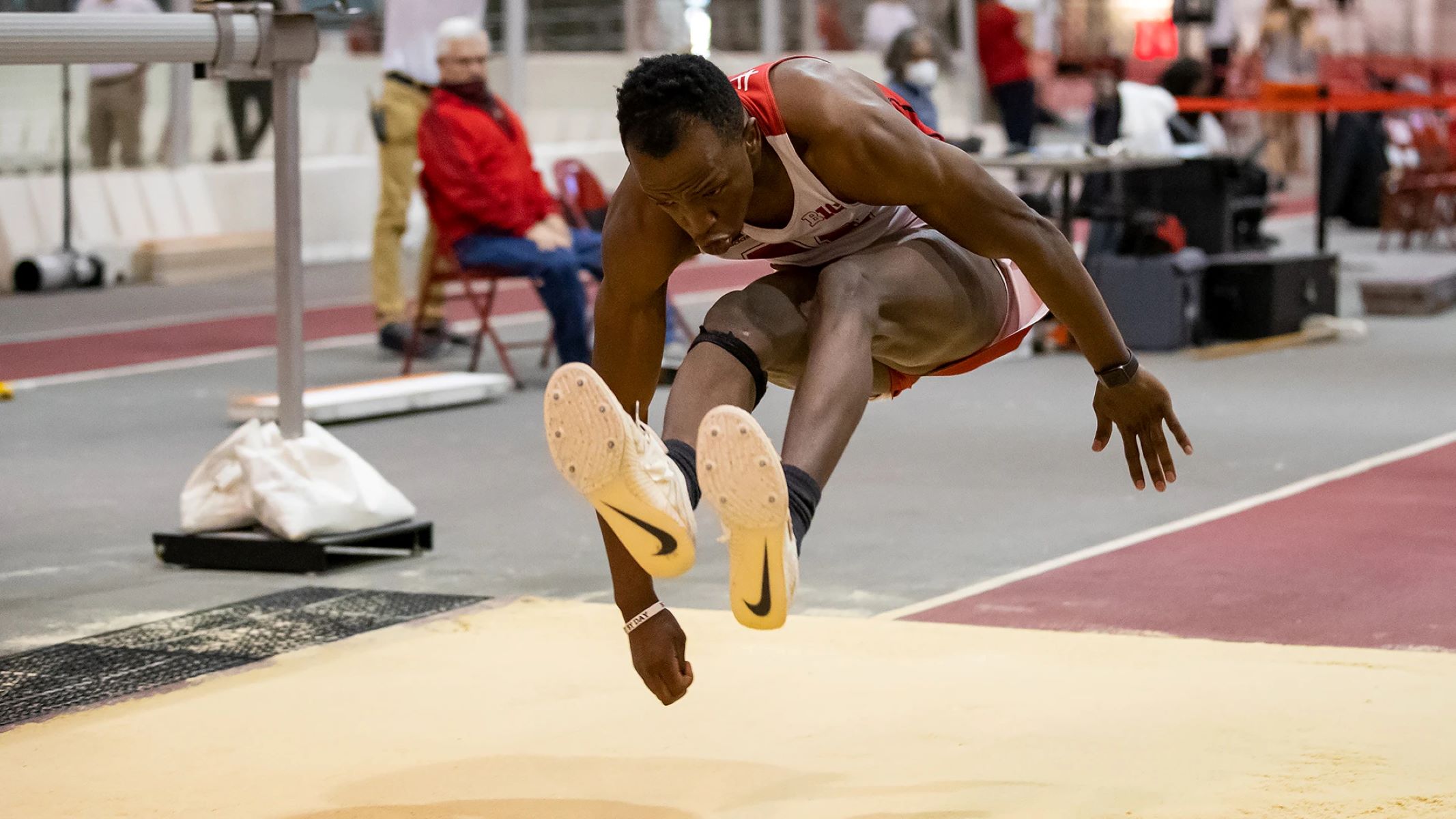

Featured
What Is A Triple Jump?
Modified: January 22, 2024
Discover the exciting world of triple jump in this featured article. Learn about the technique, rules, and history of this fascinating athletic event.
Introduction
The triple jump is a fascinating and dynamic track and field event that combines athleticism, precision, and explosive power. It is a highly technical event that requires athletes to showcase their speed, strength, and coordination in a series of consecutive jumps. In this article, we will delve into the world of triple jump, exploring its definition, history, technique, rules and regulations, notable jumpers, as well as the benefits and challenges associated with this challenging discipline.
The triple jump, also known as the hop, step, and jump, is one of the oldest recorded track and field events. It has been a staple in the Olympic Games since their inception in ancient Greece, and it continues to captivate audiences around the world with its unique blend of power and grace.
The objective of the triple jump is for the athlete to cover the maximum distance possible by performing a hop, followed by a step, and finally a jump into a sandpit. The athlete must complete these three phases in a continuous motion, without any pauses or stops.
The origins of the triple jump can be traced back to the ancient Olympic Games, where it was known as the “hoplitodromos” and was a part of the pentathlon event. Over time, the event evolved and gained popularity, eventually becoming a standalone event in modern track and field competitions.
The triple jump requires a unique combination of speed, strength, and technique. Athletes must generate explosive power from the take-off and maintain momentum throughout the three phases. The take-off is crucial, as it sets the foundation for the rest of the jump. Athletes must then execute a precise step, ensuring they do not fall outside the designated area. Finally, the jump phase requires athletes to extend their body and propel themselves as far as possible into the sandpit.
Like any athletic event, the triple jump comes with its fair share of rules and regulations. Athletes must adhere to specific guidelines regarding take-off technique, maximum number of steps, and landing within the designated area. Failure to comply with these rules can result in a nullified jump or disqualification from the competition.
Throughout history, the triple jump has seen the rise of several notable athletes who have pushed the boundaries of human performance. These individuals, through their skill and determination, have set records and left a lasting impact on the sport.
The triple jump is not only a challenging event but also offers numerous benefits. It helps to improve lower body strength, speed, explosiveness, and overall conditioning. However, mastering the triple jump requires hard work, dedication, and a relentless pursuit of excellence.
In the following sections, we will explore the fascinating world of triple jump in greater detail. We will delve into the history of the event, analyze the technique, dive into the rules and regulations, and learn about some of the most notable triple jumpers of all time. So, let’s explore the captivating world of triple jump together!
Definition of Triple Jump
The triple jump is an athletic event that falls under the category of track and field. It is a discipline that combines speed, agility, and explosive power. The objective of the triple jump is for the athlete to cover the maximum distance possible by executing a series of consecutive jumps.
Unlike other jumping events like the long jump or high jump, the triple jump consists of three distinct phases: the hop, the step, and the jump. These phases must be performed in a continuous motion without any pauses or hesitations.
The first phase of the triple jump is called the hop. In this phase, the athlete pushes off from one foot and lands on the same foot, propelling themselves forward. The hop serves as a transitional movement to set up the next phase of the jump.
Following the hop, the athlete moves into the second phase known as the step. In this phase, the athlete takes a step forward onto the opposite foot from the one used in the hop. The leg that was used for the hop is now swung forward, creating momentum and preparing the athlete for the final phase.
The third and final phase of the triple jump is the jump. In this phase, the athlete leaps off the take-off foot, extending their body forward and upward as they soar through the air. The goal is to maintain as much speed and height as possible while covering the maximum distance before landing.
These three phases – hop, step, and jump – require precise technique, coordination, and explosive power. The sequence of movements must flow seamlessly, with the athlete maintaining momentum and generating power throughout the entire jump.
Triple jumpers must also possess excellent spatial awareness to accurately judge their take-off positions and angles. The landing phase is critical, as athletes must ensure they land within a designated area, usually marked by a sandpit. Failure to land within this area can result in a voided jump.
The triple jump is often considered one of the most challenging events in track and field. It demands a combination of speed, power, and technique, making it a physically and mentally demanding discipline. Athletes must possess a high level of strength in their lower body, particularly in the legs, as well as strong core stability and coordination.
In the subsequent sections, we will explore the history of the triple jump, the technique involved, the rules and regulations governing the event, and some of the notable triple jumpers who have made their mark in this captivating athletic discipline.
History of Triple Jump
The triple jump, also known as the hop, step, and jump, has a rich and storied history that dates back thousands of years. Its origins can be traced back to the ancient Olympic Games in ancient Greece, where it was a part of the pentathlon event.
In the ancient Olympic Games, the hoplitodromos, as it was called, was a grueling test of an athlete’s strength and agility. Competitors would hop and jump while wearing heavy armor, symbolizing the skills required in battle. The distance covered during the event was not measured but rather judged by eye, with the winner declared based on style and skill.
As the Olympic Games evolved over time, so did the triple jump. It continued to be a part of the pentathlon event until the modern era, when it became an individual track and field event. The first recorded measurements of the distance in the triple jump were documented in the mid-19th century.
The techniques used in the triple jump also evolved throughout history. In the early days, athletes would perform a hop with both feet, followed by a step and a jump. This technique, known as the “double hop,” or “double leg jump,” was eventually replaced by the more efficient “single leg jump” technique in the late 1800s.
Over the years, the world of triple jumping has seen many great athletes rise to prominence. During the early 20th century, athletes like Viktor Saneyev and João Carlos de Oliveira showcased their exceptional skills and set new records. Saneyev, from the Soviet Union, won three Olympic gold medals and set multiple world records during his career.
In more recent times, the dominant figures in the triple jump have included names like Christian Taylor and Jonathan Edwards. Taylor, from the United States, has won multiple Olympic and World Championship titles, breaking records along the way. Edwards, from Great Britain, set the current world record in 1995, which still stands to this day.
The triple jump has continued to captivate audiences around the world with its combination of finesse and raw power. It is an event that requires athletes to master a complex sequence of movements, showcasing their speed, strength, and coordination.
In the next sections, we will explore the technique involved in the triple jump, the rules and regulations governing the event, and take a closer look at some of the notable triple jumpers who have left an indelible mark in this demanding and exhilarating athletic discipline.
Technique in Triple Jump
The triple jump is a highly technical event that requires athletes to execute a precise sequence of movements in order to maximize their distance and maintain momentum throughout the jump. The key to success in the triple jump lies in mastering the technique involved in each of the three phases: the hop, the step, and the jump.
1. The Hop: The first phase of the triple jump is the hop. In this phase, the athlete jumps off one foot and lands on the same foot, using a short, explosive motion. The goal of the hop is to generate initial forward momentum and set the foundation for the subsequent phases. Athletes must focus on driving their knee up and forward while maintaining a strong posture and body position.
2. The Step: After the hop, the athlete moves into the step phase. In this phase, the athlete takes a step onto the opposite foot from the one used in the hop, transitioning smoothly from one foot to the other. The step should be taken with a quick and purposeful motion, maintaining balance and stability. Athletes must be careful to avoid any lateral movement or crossing over their legs, as this can result in a loss of power and distance.
3. The Jump: The final phase of the triple jump is the jump. In this phase, the athlete leaps off the take-off foot, extending their body forward and upward to maximize the distance covered. The jump should be executed with explosive power, focusing on driving the knee up and forward while maintaining a strong leg extension. Athletes must strive to maintain a smooth transition from the step to the jump, utilizing the momentum generated in the earlier phases to propel themselves towards the landing area.
In addition to the three phases, there are other technical elements that can greatly impact the success of a triple jump performance:
– Approach: Athletes must carefully plan and execute their approach to the take-off board. The approach should be consistent, with precise timing and rhythm, allowing the athlete to generate maximal speed and power. The number of steps taken before the take-off varies depending on the athlete’s individual style and preference.
– Arm Action: Proper arm action is crucial in maintaining balance and rhythm throughout the jump. Athletes should use their arms to generate additional power and momentum, swinging them in sync with the movements of the legs and body.
– Landing: The landing phase is critical, as athletes must ensure they land within a designated area, usually marked by a sandpit. Landing techniques may vary, but a common objective is to extend the legs forward, aiming for a stable and balanced landing to avoid any penalties or disqualifications.
Mastering the technique in the triple jump requires consistent practice and dedicated training. Athletes must focus on refining each phase of the jump, paying attention to their body mechanics, speed, and timing. Coaches play a vital role in providing guidance and feedback, helping athletes refine their technique and maximize their potential.
In the following sections, we will explore the rules and regulations that govern the triple jump, as well as highlight some of the most notable triple jumpers who have showcased their exceptional skills and left a lasting impact on this captivating athletic discipline.
Rules and Regulations
Like any other track and field event, the triple jump has specific rules and regulations set by governing bodies such as the International Association of Athletics Federations (IAAF). These rules ensure fair play and uniformity in competition, while also prioritizing the safety of the athletes involved.
Here are some of the key rules and regulations to be aware of in the triple jump:
1. Take-off: Athletes must execute their take-off on or behind the take-off board or foul line. The take-off foot must make contact with the ground within the designated take-off area. Failure to do so results in a foul, and the jump is considered invalid.
2. Maximum Number of Steps: Athletes are allowed a maximum number of steps before the take-off phase. The exact number of steps permitted varies depending on the athlete’s personal preference and style. It is crucial to maintain consistent and rhythmic strides within the approach to ensure an optimal take-off.
3. Measurement: The distance in the triple jump is measured from the take-off board to the closest mark made in the sandpit by any part of the athlete’s body that comes in contact with the sand. The measurement is usually rounded down to the nearest centimeter for official records.
4. Foul Jumps: A foul jump occurs when an athlete fails to comply with the rules and regulations of the event. This can include stepping outside the designated take-off area, taking more steps than allowed, or not executing the phases of the jump in the correct order. A foul jump results in a nullified attempt, and no distance is recorded.
5. Landing: Athletes must ensure that they land within the designated landing area, usually marked by a sandpit. A valid jump requires the athlete to have their feet or any other body part in contact with the sand within the landing area. Any part of the athlete’s body touching the ground outside the landing area results in a foul.
6. Wind Assistance: In outdoor competitions, wind assistance can significantly impact the results. To ensure fairness, there are specific limits for allowable tailwind in triple jump competitions. If the tailwind exceeds the predetermined limits, the jump might be rendered invalid or ineligible for records.
7. Judges and Officials: Competitions in the triple jump are overseen by a group of judges and officials. These individuals observe the jumps, measure the distances, and determine the validity of each jump based on the established rules. Their role is crucial in maintaining fair play and accurate results.
It is important for athletes participating in the triple jump to familiarize themselves with the specific rules and regulations of the competition they are entering. Additionally, coaches, trainers, and officials provide guidance on training techniques and ensure that athletes adhere to the required standards.
The rules and regulations of the triple jump ensure a level playing field and guarantee the integrity of the event. By adhering to these regulations, athletes can compete fairly, strive for personal bests, and showcase their skills in this captivating discipline.
In the next sections, we will explore some of the notable triple jumpers who have left their mark in the history of the event, as well as discuss the benefits and challenges associated with this exciting track and field discipline.
Notable Triple Jumpers
The world of triple jump has been graced with exceptional athletes who have pushed the boundaries of human performance and left an indelible mark on the sport. These triple jumpers have not only achieved incredible feats but have also inspired future generations of athletes to strive for greatness in this exciting discipline. Let’s take a closer look at some of the most notable triple jumpers in history:
1. Jonathan Edwards: Jonathan Edwards from Great Britain is widely regarded as one of the greatest triple jumpers of all time. He set the current world record of 18.29 meters (60 feet 0.5 inches) in 1995, a remarkable accomplishment that still stands to this day. Edwards’ record-breaking jump at the World Championships in Gothenburg, Sweden showcased his exceptional skills and cemented his legacy in the sport.
2. Christian Taylor: Christian Taylor, representing the United States, is a dominant force in the world of triple jump. He has won multiple Olympic gold medals and World Championship titles, demonstrating his consistency and ability to perform on the biggest stages. Taylor possesses remarkable speed, power, and technique, which have propelled him to great heights in the triple jump event.
3. Viktor Saneyev: Viktor Saneyev, hailing from the Soviet Union, is considered a legend in the triple jump. He won three Olympic gold medals and set numerous world records during his career in the 1960s and 1970s. Saneyev’s exceptional technique, consistency, and longevity in the sport have made him an icon of the triple jump event.
4. Will Claye: Will Claye, an American athlete, has made a name for himself in both the long jump and triple jump disciplines. He has secured multiple Olympic and World Championship medals, displaying his versatility and aptitude for these jumping events. Claye’s ability to consistently perform at a high level in both disciplines has earned him a reputation as one of the top athletes in the field.
5. Yulimar Rojas: Yulimar Rojas, representing Venezuela, has emerged as one of the dominant forces in women’s triple jump. She has achieved remarkable success, including Olympic and World Championship titles. Rojas’ skill, dedication, and long strides have propelled her to break records and establish herself as one of the best female triple jumpers of all time.
These notable triple jumpers, along with many others, have left a lasting impact on the sport through their exceptional performances, record-breaking achievements, and dedication to their craft. Their influence is not only felt in the history books but also in inspiring the next generation of triple jumpers around the world.
In the following sections, we will explore the benefits and challenges associated with the triple jump, shedding light on the physical demands, mental fortitude, and overall athleticism required to excel in this captivating track and field discipline.
Benefits and Challenges of Triple Jump
The triple jump is not only a captivating and exciting track and field event, but it also offers a range of benefits to athletes who participate in this challenging discipline. However, with the benefits come unique challenges that athletes must navigate. Let’s explore the advantages and difficulties associated with the triple jump:
Benefits:
– Lower Body Strength: The triple jump places significant demands on the lower body, including the legs and hips. Athletes must have powerful leg muscles to generate the explosive force needed to propel themselves through each phase of the jump. Regular training and participation in the triple jump can lead to increased lower body strength and muscle development.
– Speed and Quickness: The triple jump requires athletes to exhibit bursts of speed and rapid directional changes. Athletes must accelerate quickly during the approach to the take-off, maintain speed through the hop and step phases, and explode with speed during the final jump. Regular triple jump training can improve an athlete’s overall speed and quickness, enhancing their performance in other sports and activities as well.
– Coordination and Body Control: Triple jumpers must possess exceptional coordination and body control to execute the precise movements required in each phase of the jump. The combination of the hop, step, and jump necessitates a high level of spatial awareness and control over body movements. Consistent training in the triple jump can improve an athlete’s overall coordination and body control.
– Explosive Power: Triple jumpers need explosive power to generate the force necessary to launch themselves through each phase of the jump. The ability to rapidly generate power from the take-off foot and propel the body forward is fundamental to achieving significant distances. Regular training in the triple jump can enhance an athlete’s explosive power, which can be beneficial in other sports and activities requiring explosive movements.
Challenges:
– Technical Complexity: The triple jump is a highly technical event that requires athletes to master a series of movements and transitions. Executing the hop, step, and jump in a continuous flow without any hesitation or technical faults can be challenging. Athletes must dedicate significant time and effort to develop and refine their technique.
– Physical Demands: The triple jump places high demands on an athlete’s body, requiring a combination of strength, speed, and endurance. Athletes must train extensively to develop the necessary levels of strength, power, and aerobic capacity to perform at their best. This can involve rigorous training sessions and a commitment to physical conditioning.
– Injury Risk: Like any sport, the triple jump carries a risk of injury. The repetitive nature of the jumping and the high-impact landings place stress on the joints, particularly the ankles, knees, and hips. Athletes must take preventive measures, such as proper warm-ups, cooldowns, and adequate rest, and work with coaches to develop safe and effective training programs to mitigate the risk of injury.
– Mental Focus: The triple jump requires athletes to maintain intense concentration and focus throughout the entire jump. Athletes must factor in timing, speed, and body positioning, all while adapting to various external factors such as wind and stadium conditions. The mental aspect of the triple jump is just as crucial as the physical, as any lapses in concentration can disrupt rhythm and technique.
Despite the challenges, the triple jump offers athletes a unique avenue to showcase their athleticism, skill, and determination. The benefits gained from participation in the triple jump can extend beyond the event itself, providing athletes with improved physical fitness, enhanced coordination, and mental resilience.
In the next sections, we will conclude our exploration of the fascinating world of triple jump by summarizing the key points discussed and the enduring legacy of this captivating track and field discipline.
Conclusion
The triple jump is a captivating track and field event that combines athleticism, precision, and explosive power. It has a rich history that dates back to the ancient Olympic Games and continues to captivate audiences around the world today. The triple jump requires athletes to master the technique involved in the hop, step, and jump phases, showcasing their speed, strength, and coordination.
Throughout history, notable triple jumpers such as Jonathan Edwards, Christian Taylor, and Viktor Saneyev have set records and left a lasting impact on the sport. These exceptional athletes have pushed the boundaries of human performance, inspiring future generations to strive for greatness in this challenging discipline.
The triple jump offers a range of benefits to those who participate. It helps to develop lower body strength, speed, coordination, and explosive power while providing unique physical and mental challenges. However, athletes must navigate the technical complexity of the event, manage the physical demands, and mitigate the risk of injury through proper training and preparation.
In the world of triple jump, precision and skill are combined with raw power and athleticism, creating a captivating display of human capability. Athletes must master the complexities of the event, from the approach to the take-off, to the seamless execution of the hop, step, and jump. Proper technique, physical conditioning, and mental focus are imperative to achieving success in the triple jump.
As we conclude our exploration of the triple jump, we hope that you now have a deeper understanding and appreciation for this remarkable track and field discipline. It is an event that is filled with excitement, skill, and the pursuit of excellence. Whether you are an athlete, a track and field enthusiast, or simply a spectator, the triple jump continues to captivate with its blend of power, grace, and athletic prowess.
So, let the legacy of the triple jump inspire and push you to new heights, as you appreciate the dedication and talent of the athletes who take flight in pursuit of extraordinary distances in this captivating event.

